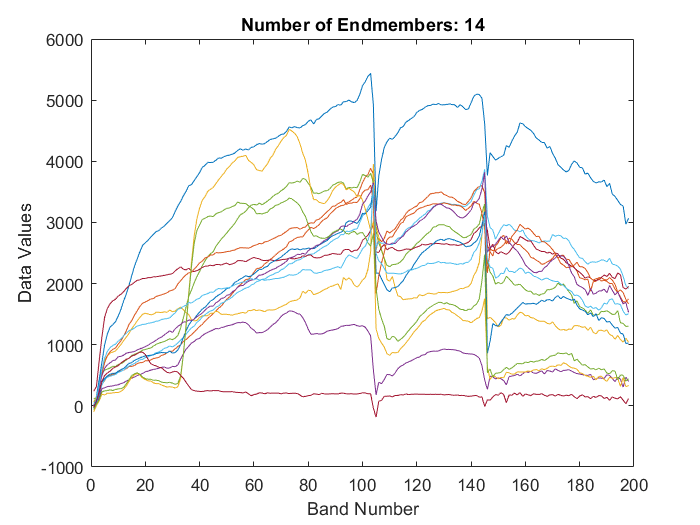countEndmembersHFC
Find number of endmembers
Syntax
Description
numEndmembers = countEndmembersHFC(inputData)
numEndmembers = countEndmembersHFC(inputData,Name=Value)NoiseWhiten=false does not perform noise-whitening of the data before
extracting the endmembers.
Note
This function requires the Hyperspectral Imaging Library for Image Processing Toolbox™. You can install the Hyperspectral Imaging Library for Image Processing Toolbox from Add-On Explorer. For more information about installing add-ons, see Get and Manage Add-Ons.
The Hyperspectral Imaging Library for Image Processing Toolbox requires desktop MATLAB®, as MATLAB Online™ and MATLAB Mobile™ do not support the library.
Examples
Input Arguments
Name-Value Arguments
Output Arguments
References
[1] Chang, C.-I., and Q. Du. “Estimation of Number of Spectrally Distinct Signal Sources in Hyperspectral Imagery.” IEEE Transactions on Geoscience and Remote Sensing 42, no. 3 (March 2004): 608–19. https://doi.org/10.1109/TGRS.2003.819189.
Version History
Introduced in R2020a
See Also
hypercube | fippi | ppi | nfindr | estimateAbundanceLS

